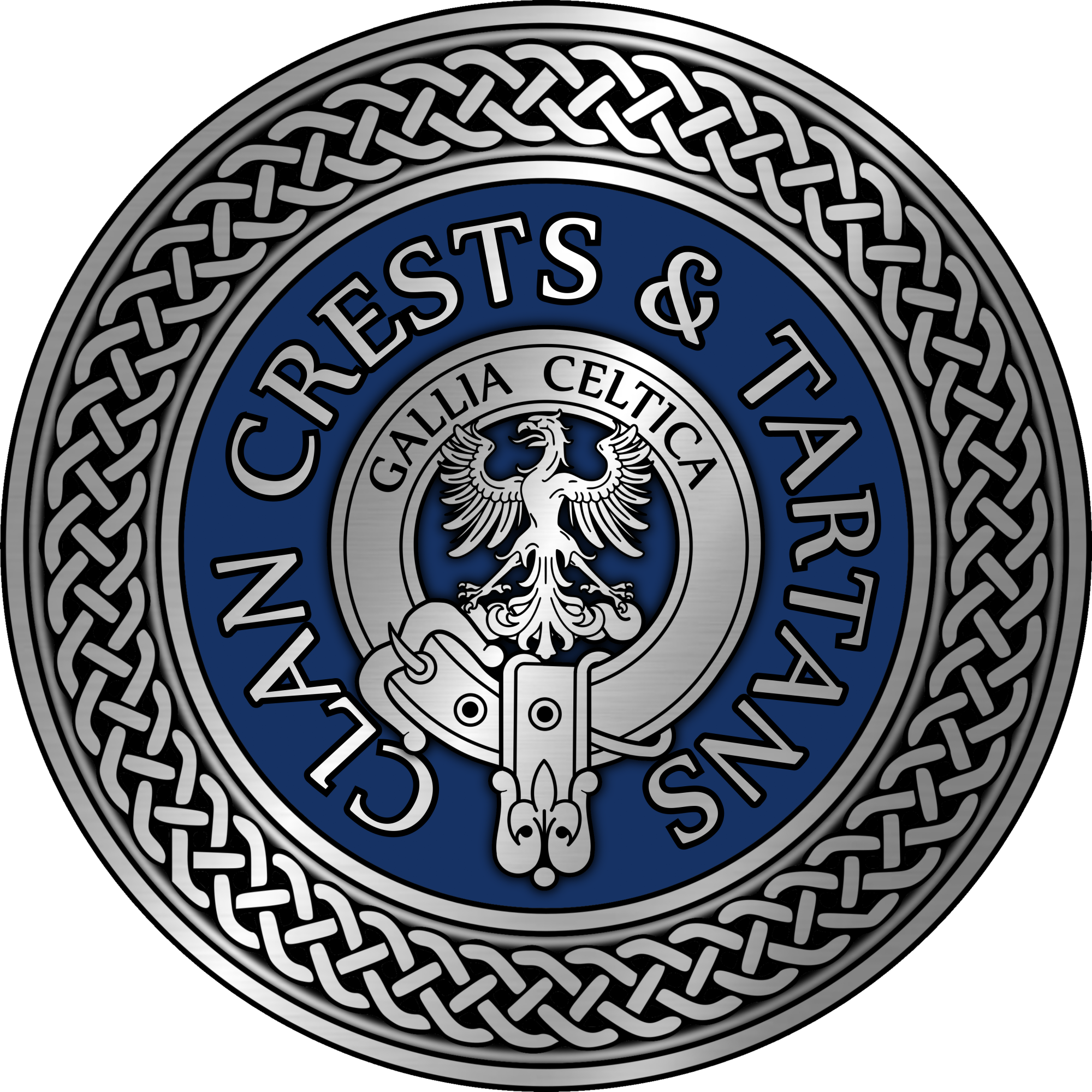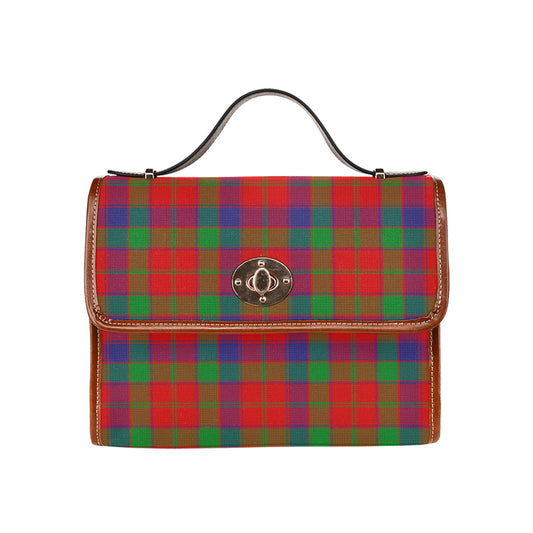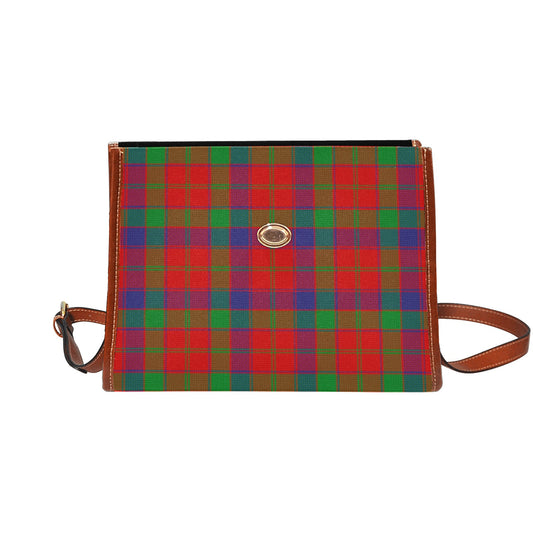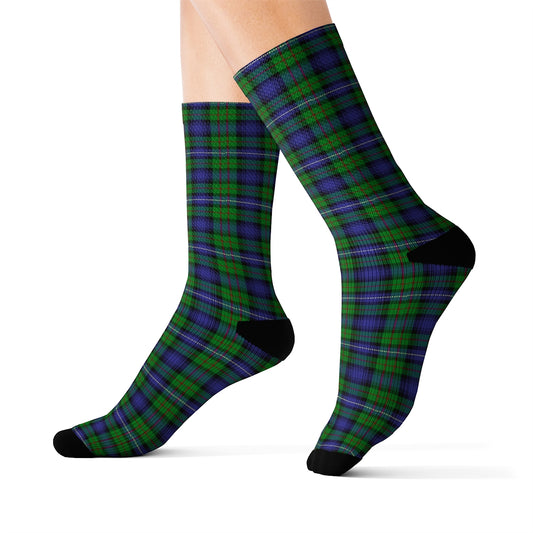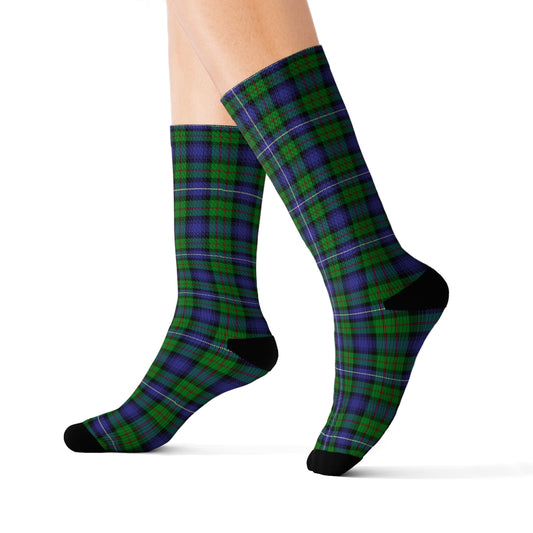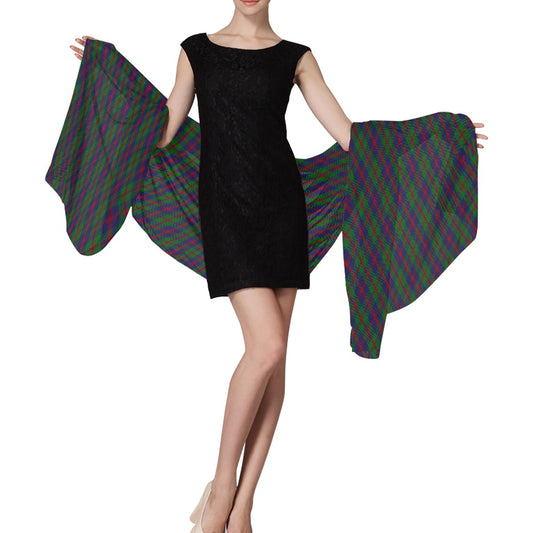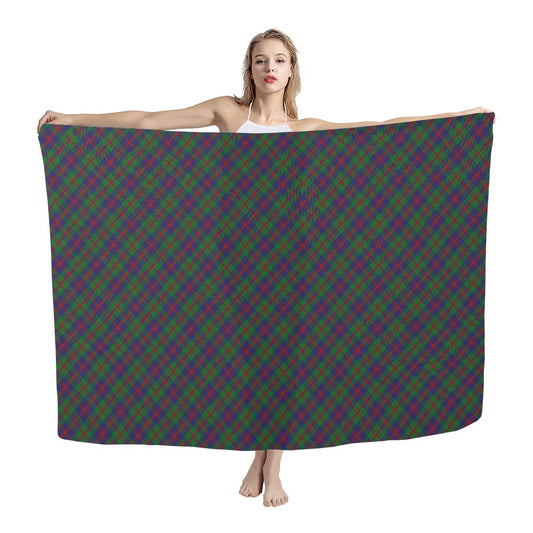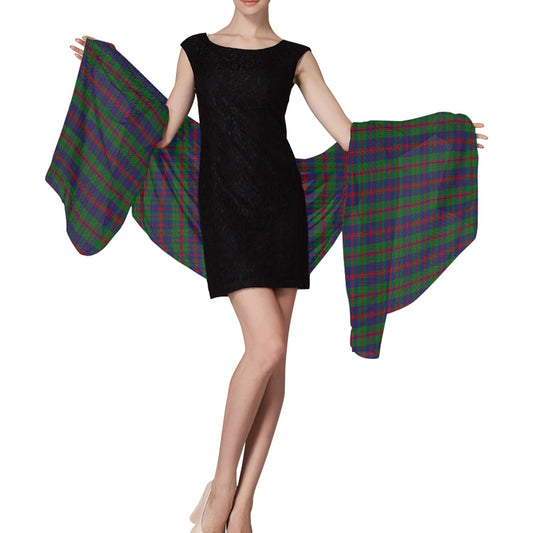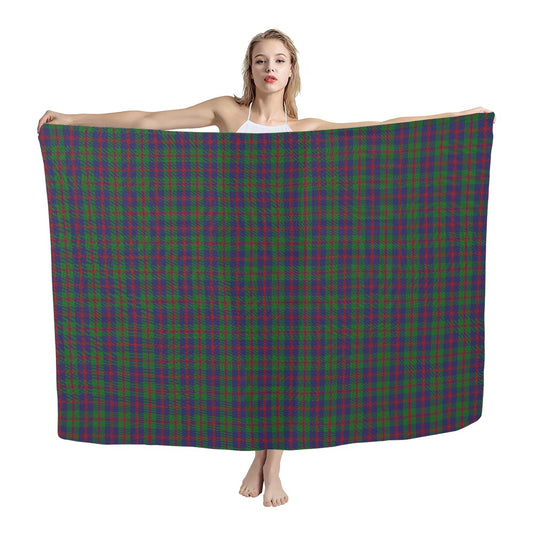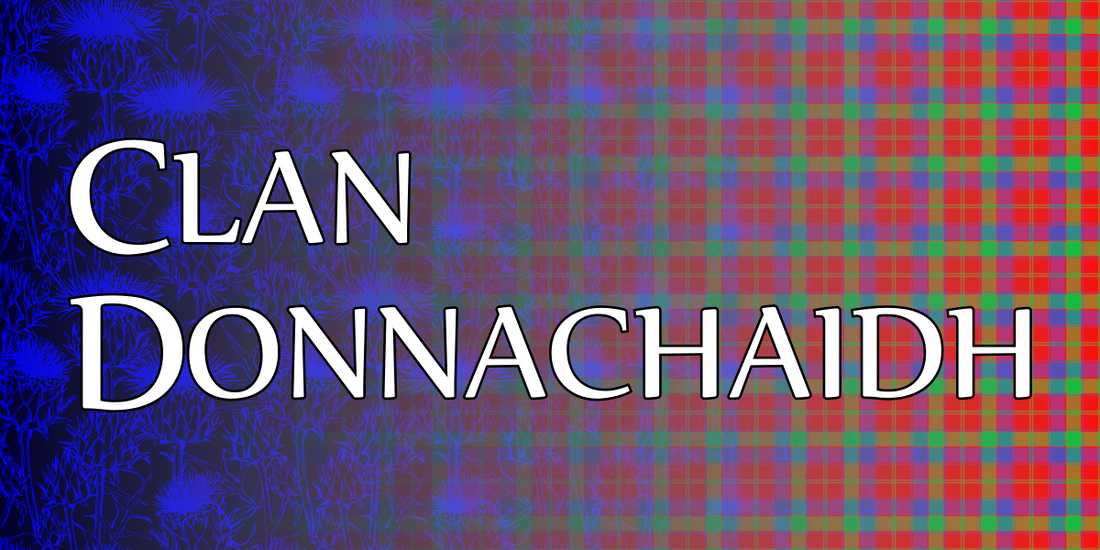

Scots Gaelic: Chlann Dhonnchaidh
Also known as Clan Robertson or Clan Duncan
Profile
Crest: Dexter hand holding up an imperial crown Proper
Motto: Virtutis gloria merces (Glory is the reward of valour)
War cry: Garg 'nuair dhùisgear (Fierce when roused)
Region: Highlands
District: Struan, Perthshire
Plant Badge: Bracken
Pipe Music: Teachd Chlann Dhonnchaidh (Coming of the Robertsons)
Historic Seat: Dunalastair Castle
Clan Relationships
Branches
Robertson of Struan (chiefs)
Robertson of Lude (principal cadet)
Robertson of Auchleeks
Robertson of Faskally
Robertson of Inches
Robertson of Kindeace
Robertson of Kinlochmouidart
Septs
Collier, Colyear, Conlow, Connachie, Dobbie, Dobieson, Dobie, Dobinson, Dobson, Donachie, Donica, Donnachie, Duncan, Duncanson, Dunkeson, Dunnachie, Hart, Inches, MacConachie, MacConlogue, MacConnichie, MacDonachie, MacInroy, MacIver, MacIvor, MacLagan, MacLaggan, MacRob, MacRobb, MacRobbie, MacRobert, MacRobie, MacWilliam, McConnachie, McRobie, Reid, Read, Robb, Robbie, Roberts, Roberson, Robison, Robinson, Robson, Roy, Stark, Tannoch
(Tanner, Tonner), Tannochy
Allied Clans
Rival Clans
MacDougall, Ogilvy
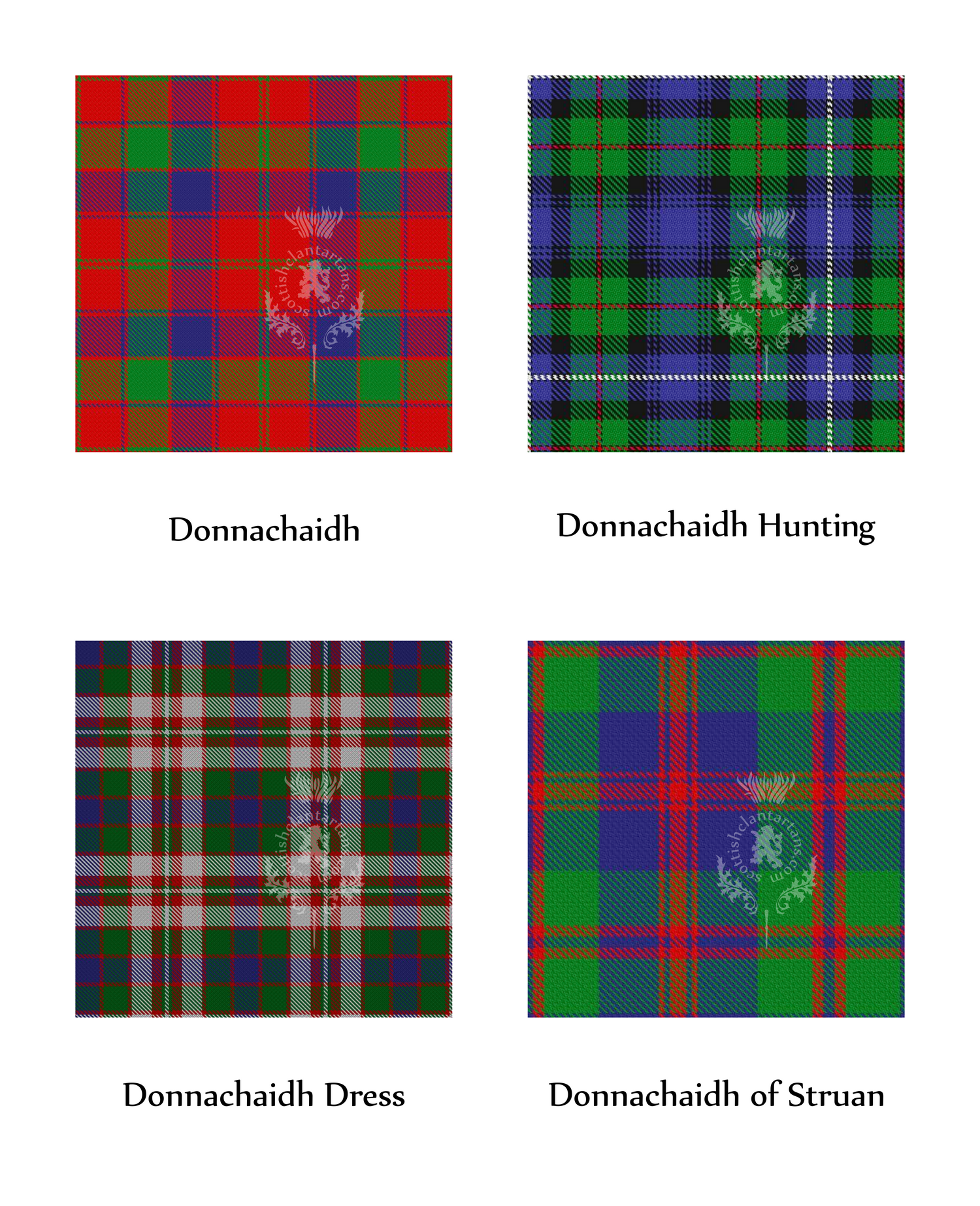
Clan Tartans
Shop Donnachaidh TartansClan History
Origins
There are two main theories as to the origins of the Clan Donnachaidh:
1. That the founder of the clan, Donn(a)chadh (Duncan) was the second son of Angus MacDonald, Lord of the Isles.
2. That the Robertsons are lineal descendants of the Celtic Earls of Atholl, whose progenitor was King Duncan I (Donnchadh in Scottish Gaelic). The Collins Scottish Clan & Family Encyclopedia supports this theory.
Wars of Scottish Independence
The clan's first recognised chief, Donnchaidh Reamhar, "Stout Duncan", son of Andrew de Atholia (Latin "Andrew of Atholl"), was a minor land-owner and leader of a kin-group around Dunkeld, Highland Perthshire, and as legend has it, an enthusiastic and faithful supporter of Robert I (king 1306–29 aka Robert the Bruce) during the Wars of Scottish Independence; he is believed to have looked after King Robert after the Battle of Methven in 1306. The clan asserts that Stout Duncan's relatives and followers (not yet known as Robertsons) supported Robert the Bruce at the Battle of Bannockburn in 1314. His descendants became known (in English or Scots) as the Duncansons, or Gaelic Clann Dhònnchaidh, "Children of Duncan". Duncan is believed to have been killed at the Battle of Neville's Cross and was succeeded by Robert, from whom the Clan Robertson takes its name.
Robert's brother, Patrick, was the ancestor of the Robertsons of Lude who were the principal cadet branch.
Donnachaidh Collection
-
Clan Donnachaidh Tartan Canvas Handbag
Regular price €44,95 EURRegular priceUnit price per -
Clan Donnachaidh (Robertson) Hunting Tartan Socks
Regular price €13,95 EURRegular priceUnit price per -
Clan Donnachaidh of Struan Tartan Chiffon Scarf
Regular price €26,95 EURRegular priceUnit price per -
Clan Donnachaidh of Struan Tartan Chiffon Scarf
Regular price €26,95 EURRegular priceUnit price per
14th- and 15th-century clan conflicts
In 1394 a clan battle took place between Clann Dhònnchaidh,
Clan Lindsay and involving Clan Ogilvy, who were the hereditary sheriffs of Angus, during a cattle raid on Angus. Sir Walter Ogilvy was slain at this battle. Clandonoquhy had rather a reputation as raiders and feuders in late medieval Scotland, though the chiefs seem always to have been loyal to the Bruce and Stewart royal dynasties.
Robert Riabhach ("Grizzled") Duncanson, 4th Chief of Clann Dhònnchaidh, was a strong supporter of King James I (1406–1437) and was incensed by his murder at the Blackfriars Dominican Friary in Perth. He tracked down and captured two of the regicides, Sir Robert Graham and the King's uncle Walter Stewart, Earl of Atholl, as they hid above Invervack in Atholl, and turned them over to the Crown. They were tortured to death in the Grassmarket in Edinburgh on the orders of the Regent, James I's widow, Joan Beaufort (d. 1445). The Collins Scottish Clan & Family Encyclopedia states that they were put to death with considerable savagery. The Robertson crest badge of a right hand upholding an imperial crown was awarded by James II (1437–60) to the 4th chief on 15 August 1451 as a reward for capturing his father's assassins. The highly unusual third supporter (below the shield) on the Robertson coat of arms, of a "savage man in chains" is in reference to the capture of Graham. It is in honour of Robert Riabhach that his descendants took the name Robertson. James II also erected the clan lands into the Barony of Struan, which formerly took in extensive lands in Highland Perthshire, notably in Glen Errochty, the north and south banks of Loch Tay and the area surrounding Loch Rannoch. None of these lands are any longer in the possession of the clan.
Robert Riabhach or Riach died in 1460 from wounds received in battle. The chiefship then passed to his eldest son, Alexander. The Clan Robertson then feuded with the Clan Stewart of Atholl. William Robertson, the sixth chief was killed trying to recover lands that had been seized by the Stewarts of Atholl. The eighth chief of Clan Robertson was murdered and his brother inherited the estate.
Struan (Gaelic Sruthan, "streams"), is a parish church, of early Christian origin and dedicated to St. Fillan, at the confluence of the Errochty Water and Garry rivers. Many of the medieval chiefs were buried in this church (although individual monuments have unfortunately not survived). The present building was built in the early 19th century, but the foundations of its predecessor can be traced in the churchyard. Donnchadh Reamhar is, however, said to have been buried in the parish church of Dull, near Aberfeldy. Recent excavations by members of the Clan Donnachaidh Society within the now redundant church of Dull (Gaelic Dul, "meadow", "haugh") failed to find evidence of this specific burial, although others were uncovered, along with early medieval carved stones. Recent generations of chiefs have been buried in a family vault in the grounds of the estate of Dunalastair, near Kinloch Rannoch.
17th century and Civil War
Under Alexander Robertson, 12th chief, the clan are said to have supported James Graham, 1st Marquess of Montrose in all of his battles during the Scottish Civil War. During this time, the main Robertson castle at Invervack, near the present Clan museum, was burned by Cromwell's forces, and many family records
were lost. The Clan Robertson played a major part in the fighting at the Battle of Inverlochy (1645) in support of the royalist, James Graham, 1st Marquis of Montrose, where they put the king's enemies to flight. Alexander Robertson of Lude fought for Charles I of Scotland at the Battle of Tippermuir and as a result Lude was burned by Cromwell's forces in retaliation.
In 1653 the Earl of Glencairn was in Rannoch looking for support for Charles II. He raised the Clan MacGregor from the Isle of Rannoch and Alexander Robertson led his men from Fea Corrie. Both forces met above Annat and marched up the old path to Loch Garry. However, the leaders reportedly quarrelled so much among themselves that Cromwell's General, George Monk had little difficulty in winning the ensuing Battle of Dalnaspidal.
Alexander Robertson, 13th chief (b. 1668) joined the Jacobite rising of 1689 and was taken prisoner a few weeks after the Jacobite defeat at the Battle of Dunkeld. After being released he went to live in France for thirteen years where he served for some time in the French army. He returned to Scotland in 1703.
18th century and Jacobite uprisings
Alexander Robertson, 13th chief, led 500 men of Clan Donnachaidh in support of the Earl of Mar at the Battle of Sheriffmuir in 1715. He was captured, but later rescued and he took refuge in France. General Wade's report on the Highlands in 1724, estimated the clan strength at 800 men. The fighting force of Clan Donnachaidh was estimated at 700 men in 1745.
After the defeat of the Jacobite rising of 1745 the Robertson lands became part of the Forfeited Estates, although most were returned to the then chief, another Alexander Robertson, in 1784, after it became clear that the Central Highlands were wholly pacified.
Two of the most notorious and well documented Highland Clearances occurred on the Robertson clan land of Strathcarron:
1. In 1845, the Glencalvie or Croick clearance, executed by the factor James Gillander on behalf of William Robertson, sixth laird of Kindeace.
2. In 1854, the Greenyards clearance, sometimes known as the Massacre of the Rosses. This was also carried out by James Gillander on behalf of Major Charles Robertson—son of William.
Only the family vault at Dunalastair is still in the possession of the family of Struan; however, many modern properties have been added to the clan land. The title Baron of Struan is still transferred through Dunalastair.
Donnachaidh Collection
-
Clan Donnachaidh Tartan Canvas Handbag
Regular price €44,95 EURRegular priceUnit price per -
Clan Donnachaidh (Robertson) Hunting Tartan Socks
Regular price €13,95 EURRegular priceUnit price per -
Clan Donnachaidh of Struan Tartan Chiffon Scarf
Regular price €26,95 EURRegular priceUnit price per -
Clan Donnachaidh of Struan Tartan Chiffon Scarf
Regular price €26,95 EURRegular priceUnit price per
